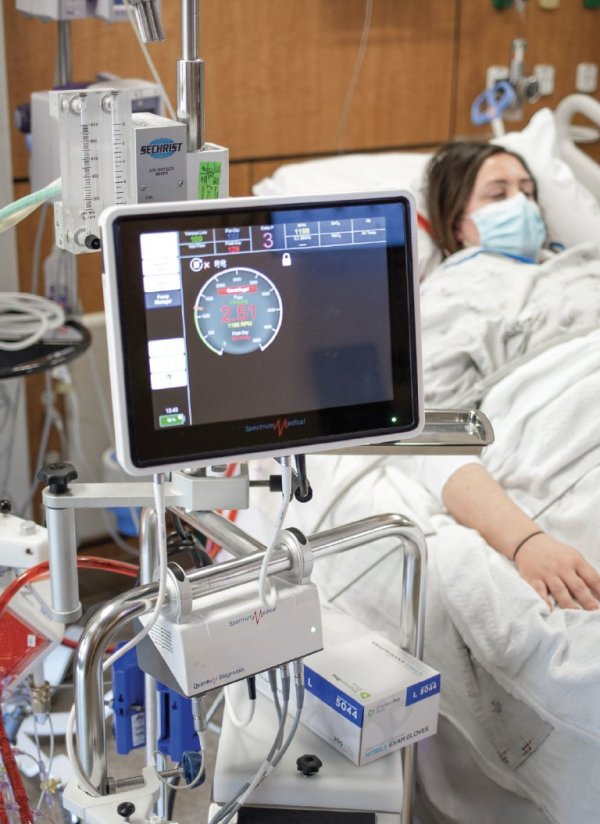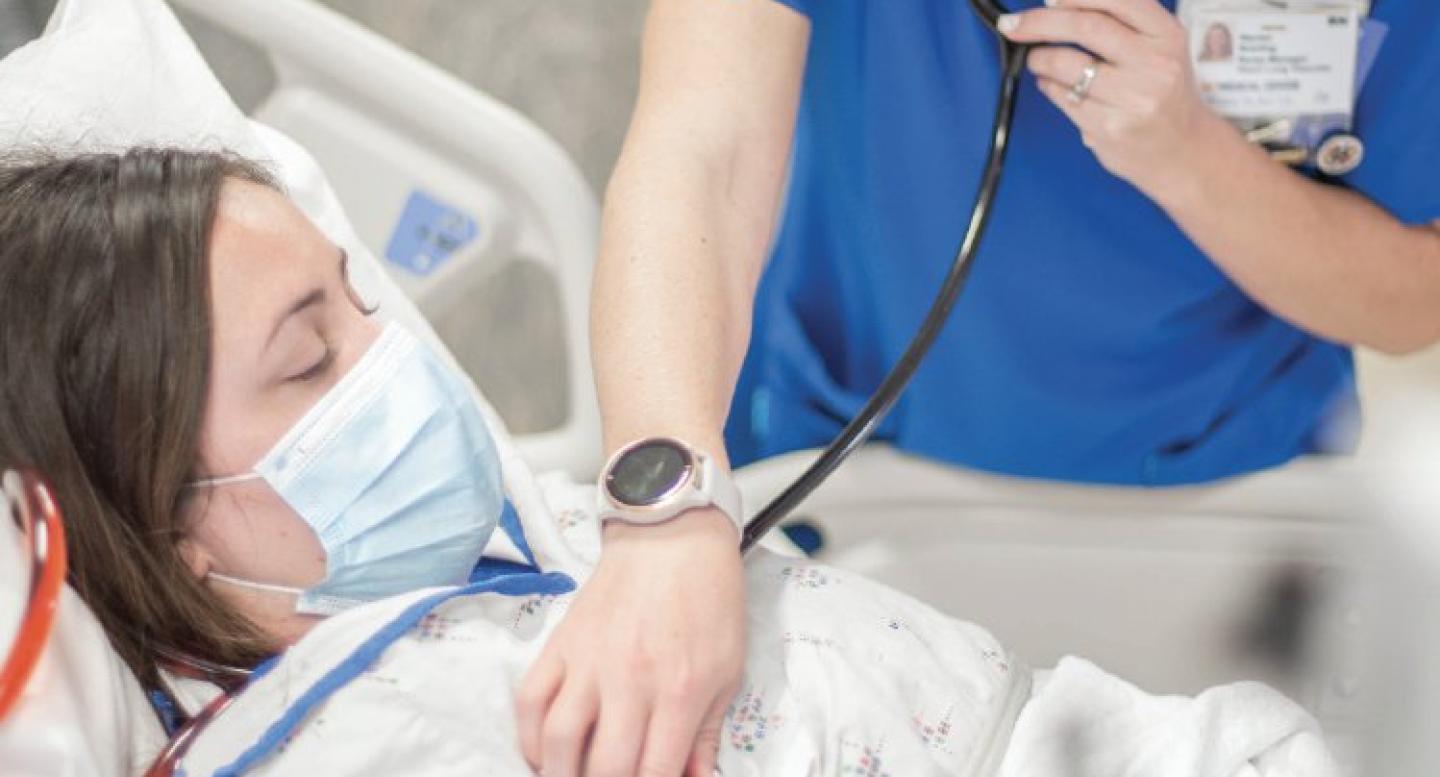Patient Story
One day after Brittnee gave birth to her third child, Brayden, she learned that the flu she’d been fighting for weeks had developed into bacterial and viral pneumonia, and she was put on a ventilator. After nearly two weeks, she became septic and her lungs collapsed.
Watch to hear her story:
What is Extracorporeal membrane oxygenation (ECMO)?
Extracorporeal membrane oxygenation (ECMO) is a potentially lifesaving treatment. The patient is on it because of a serious illness. This machine does the work for the patient’s lungs and heart. It gives the patient time to heal.

There are two types of ECMO:
- Venoarterial ECMO uses an artery and a vein.
- Venovenous ECMO uses one or two veins.
The patient’s doctor will decide which type of ECMO the patient needs.
What to Expect When A patient Goes on ECMO
This is what to expect when an adult patient goes on ECMO:
- The medical team will give the patient medicine to stop pain and keep them still during the surgery.
- The surgeon will place tubes into veins or arteries on the right side of the patient’s neck or groin. These tubes are called cannulas. The number of tubes depends on the type of ECMO the patient needs.
- The ECMO machine takes out the unoxygenated (or blue) blood. It goes through an artificial lung and gets oxygen, which makes the blood red. The machine warms and filters the blood. Then it pumps it back into the patient.
- The patient will have a breathing tube and be on a ventilator while on ECMO. This machine helps keep the lungs working while they get better.
When is ECMO Used?
For patients recovering from heart failure, or lung failure or heart surgery.
As a bridge option to further treatment, when doctors want to assess the state of other organs such as the kidneys or brain before performing heart or lung surgery.
For support during high-risk procedures in the cardiac catheterization lab.
As a bridge to a heart assist device, such as left ventricular assist device (LVAD).
As a bridge for patients awaiting lung transplant. The ECMO helps keep tissues well oxygenated, which makes the patient a better candidate for transplant.
Risks Related to ECMO
Some of the risks include:
- Bleeding. This is the most common. This may be caused by the medicine the patient is getting to prevent blood clots. The most serious place bleeding can happen is in the brain.
- The patient will have transfusions of blood and other blood products. The patient will be closely watched for any signs of infection from blood transfusions.
- The ECMO machine could fail. The ECMO specialist and the bedside nurse are trained to take care of any problems. Your family member may be off ECMO for a short time while the problem is fixed.
- An infection from placing the tubes. The patient will get antibiotics. The medical team will watch for signs of infections.
- Weight gain: Patients don’t move much on ECMO. This lets fluids settle in the body. The fluids can make the patient look puffy. This will go away when the patient is off ECMO and moving normally. The medical team may give the patient medicine or use an artificial kidney to clean the blood.
- Small blood clots or air bubbles that can get into the patient’s blood stream. There is a chance that some clots or bubbles may reach the patient. This is rare.
- Complications that cause the medical team to take the patient off of ECMO. If it is too early in the patient’s recovery, they may not survive.
The patient and the ECMO machine are closely watched by an ECMO doctor, an ECMO Specialist and an ICU nurse. They try to decrease any risks.
